Some animals don’t bite or claw—they blast. With earsplitting screams, bone-rattling rumbles, and underwater booms that can knock prey out cold, these creatures wield sound like a weapon. It’s not just noise—it’s strategy. One can burst your eardrums. Another can paralyze a fish mid-swim. And a few use their “voices” to confuse, distract, or downright terrify their enemies. From tiny bugs with huge mouths to ocean beasts that echo like thunder, these 17 animals prove that in nature, volume can be violence.
Pistol Shrimp
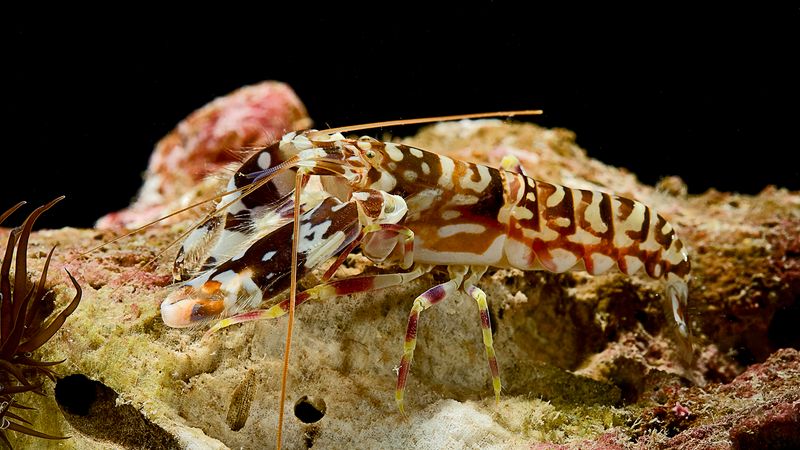
The pistol shrimp packs a sonic punch. With its specialized claw, it snaps to create a powerful shockwave. This burst of sound is not just for show; it stuns prey, making hunting easier.
The snap is one of the loudest sounds in the ocean, reaching up to 210 decibels, enough to knock out small fish. Its claw acts like a natural sonar gun. This shrimp’s ability illustrates how sound can evolve into a weapon in unexpected ways.
Intriguingly, despite its name, the pistol shrimp doesn’t carry a gun, but its claw is just as formidable.
Howler Monkey

The howler monkey is nature’s megaphone. Found in Central and South American rainforests, these primates are famous for their booming roars.
Their vocalizations can travel three miles through dense jungle, a territorial warning to rivals and a call to companions. It’s an auditory display of power and presence, a jungle loudspeaker.
Despite their intimidating calls, howler monkeys are generally peaceful, using sound to avoid conflict. Their howls are so resonant that anyone nearby can feel the vibrations, a testament to their vocal prowess.
Greater Bulldog Bat
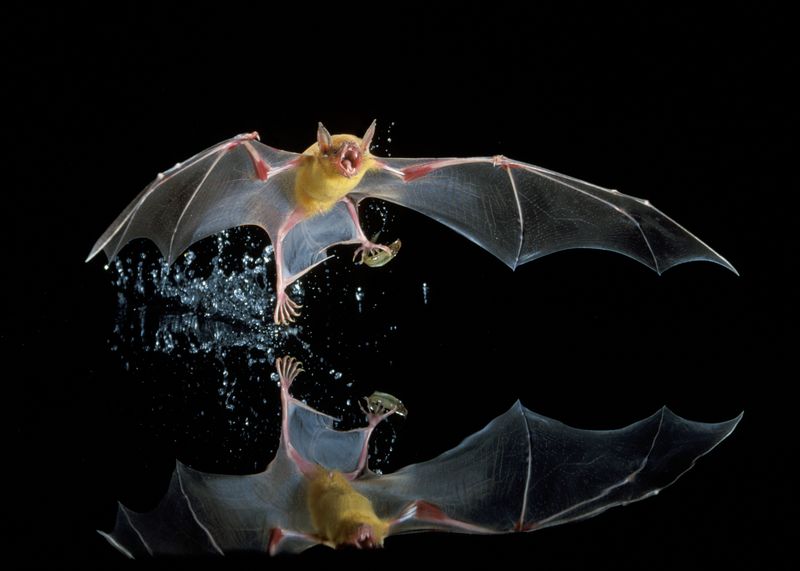
The greater bulldog bat uses sound as a hunting tool. By emitting high-frequency calls, it detects prey with echolocation.
This bat skims over water, using its keen sense of sound to catch fish. It’s a nocturnal hunter, turning the dark into its advantage.
Echolocation is not merely a navigation aid but a precise weapon to locate and capture prey, showcasing the versatile uses of sound in the animal kingdom.
Owl
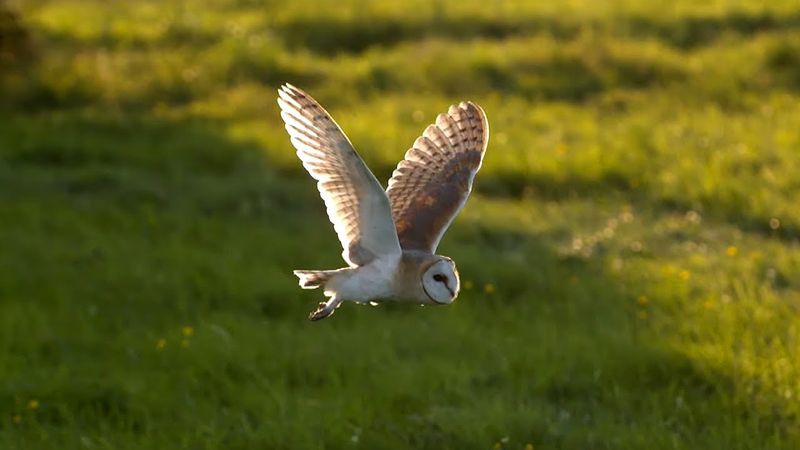
Owls use silence as their sonic advantage. Though they don’t produce loud sounds, their mastery lies in flight.
They move silently, using specialized feathers that muffle noise, allowing them to ambush prey with precision. Their acute hearing further aids in detecting even the faintest rustle.
In essence, the owl turns silence into a deadly weapon, contrasting with the loud approaches of other animals, proving that in the world of sound, sometimes less is indeed more.
Beluga Whale

Beluga whales, often called “canaries of the sea,” are known for their vocal talents. They emit clicks, whistles, and clangs, creating a complex language.
These sounds serve to communicate and navigate the icy Arctic waters. Their ability to use sound helps them in social interactions and finding food.
The beluga’s vocalizations are both a means of connection and a tool for survival, revealing the multifaceted roles sound can play in the lives of marine animals.
Dolphin
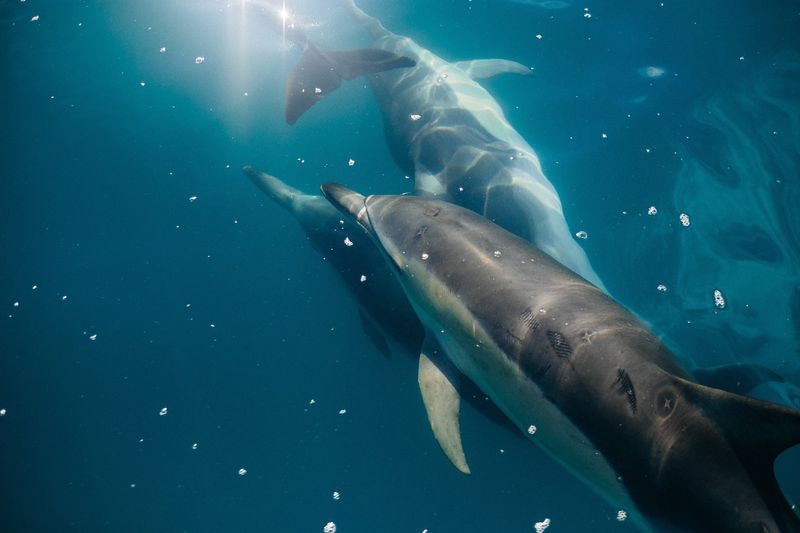
Dolphins are masters of sound. They use echolocation clicks to navigate and hunt, perfectly adapted to their aquatic world.
These sounds bounce off objects, letting dolphins “see” with sound. It’s a sophisticated system that’s both a guide and a hunting aid.
Their clicks are more than navigational tools; they are crucial for social interactions and maintaining pod cohesion, demonstrating sound’s integral role in their lives.
Peacock Mantis Shrimp
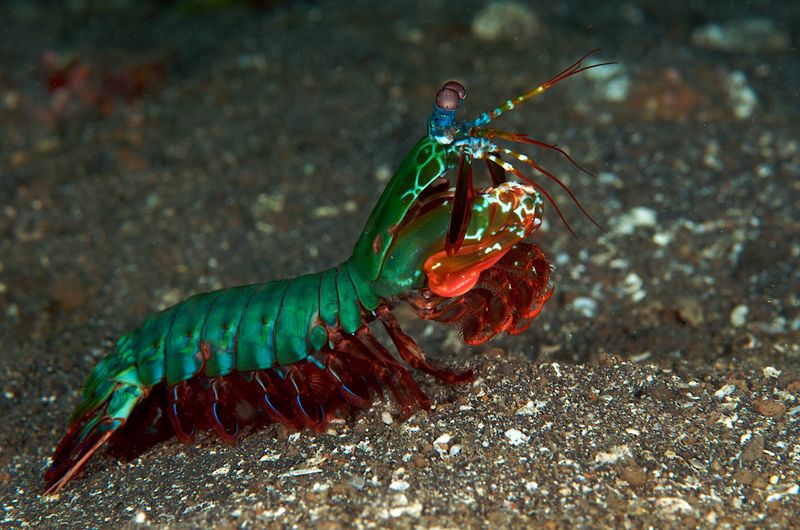
The peacock mantis shrimp uses powerful sound in a different way. Its club-like appendage strikes with incredible force, creating a sound akin to a sonic boom.
This impact can break aquarium glass and is used to smash prey shells. The sound produced is a byproduct of its sheer power.
This shrimp’s combination of vivid colors and explosive strength makes it a captivating example of sound used as a weapon in the natural world.
Kakapo
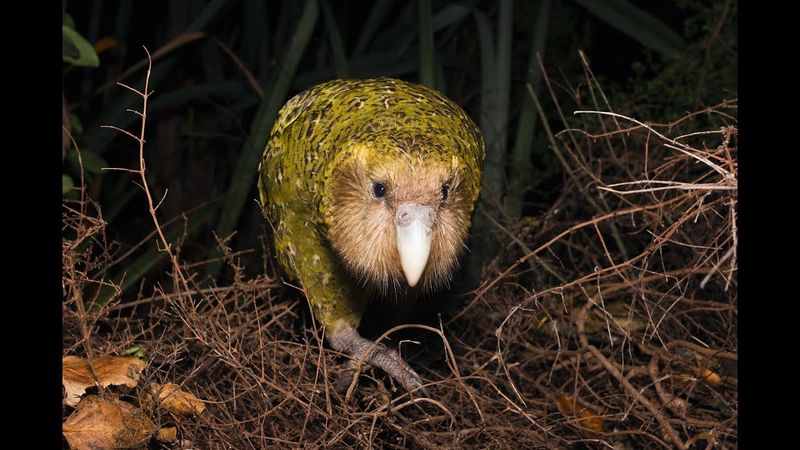
The critically endangered kakapo is New Zealand’s nocturnal parrot. Its mating calls are legendary, resonating through the forests with deep, booming notes.
These sounds serve to attract females, broadcasting the male’s presence across vast distances. It’s a poignant reminder of how sound can play a crucial role in reproduction.
The kakapo’s unique vocalizations are both a charm and a call to survival, showcasing the varied roles sound plays in nature.
Cicada

Cicadas are one of nature’s loudest insects. Their calls, often deafening, fill the air during mating season, creating a symphony of sound.
These chirps serve to attract mates and can be heard over long distances. It’s a relentless serenade that defines summer in many regions.
The cicada’s song is not just for show; it’s a powerful tool for reproduction, an example of how sound can dominate the environment and influence life cycles.
Stonefish

The stonefish is notoriously venomous, but it has a sonic side. It produces a clicking sound, a warning to potential threats.
This sound is part of its defense mechanism, complementing its camouflaged appearance and toxic spines.
The stonefish’s ability to use sound for defense illustrates how even the most dangerous creatures can rely on sonic strategies to avoid confrontation.
Gibbon
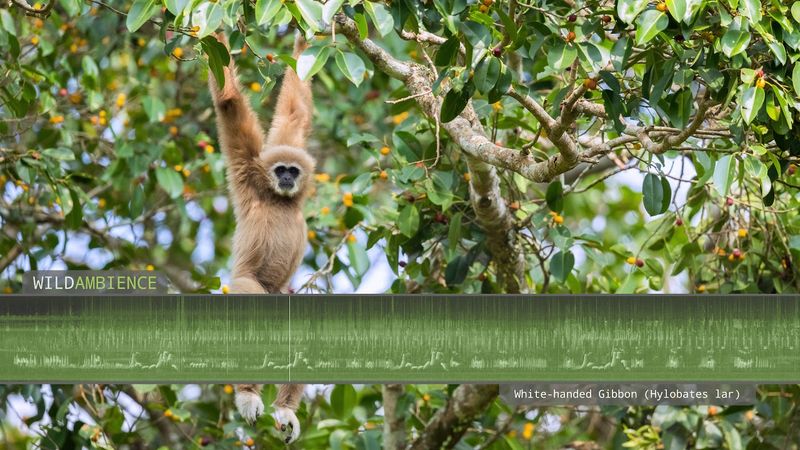
Gibbons are known for their elaborate vocal performances. These calls are not only loud but also complex, serving social purposes.
Their songs can travel through dense forests, marking territory and strengthening bonds. The gibbon’s vocalizations are a testament to the power of sound in communication.
These apes use their voices to convey emotions and maintain social structures, highlighting the role of sound in their arboreal lives.
Elephant
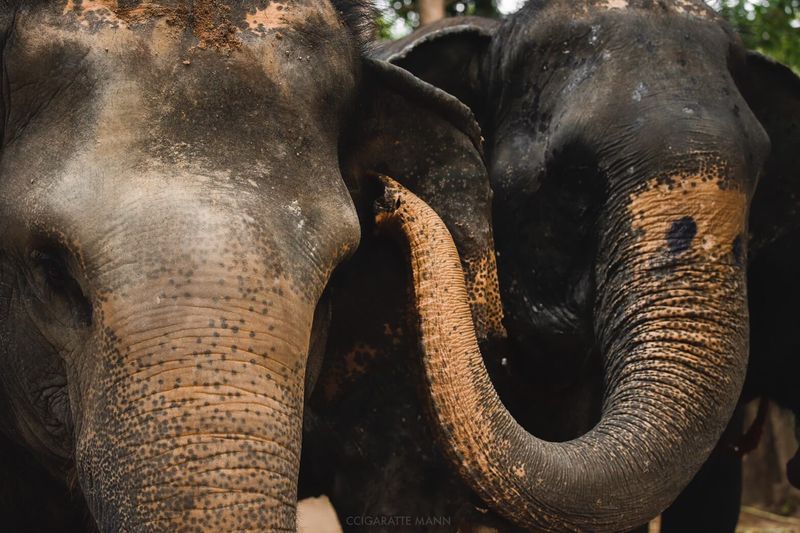
Elephants communicate using low-frequency rumbles, a sound strategy that travels miles.
These sounds are below human hearing but are vital for elephant interactions, such as coordinating movements and alerting others to danger.
The elephant’s use of infrasound shows the subtler side of sound weapons in nature, where communication becomes an unseen force that binds herds together.
Alpaca

Alpacas use sound for protection. When danger lurks, they emit high-pitched warning calls to alert the herd.
These calls can deter predators and keep the group safe, showing how sound serves as an auditory alarm system.
The alpaca’s vocalizations are a practical example of sound as a defensive measure in domesticated animals.
Ground Cricket
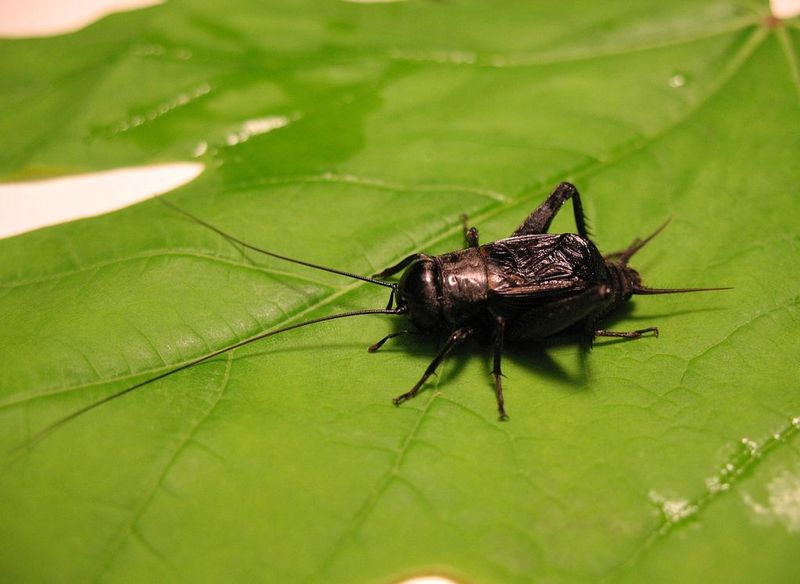
Ground crickets produce a persistent chirp that serves multiple purposes.
Their calls attract mates, with the pitch and rhythm conveying information about the male’s fitness. It’s a 24/7 broadcast of vitality and virility.
These chirps are more than just noise; they’re essential to the cricket’s reproductive strategy, illustrating sound’s role in natural selection.
Sperm Whale

Sperm whales produce some of the loudest sounds in the animal kingdom.
Their echolocation clicks are used to hunt squid in pitch-black depths. These sounds are both a navigational aid and a hunting tool.
The sperm whale’s clicks also play social roles, fostering bonds within pods, illustrating sound’s multifaceted importance in marine life.
Coyote

The coyote’s howl is iconic in the North American wild.
These vocalizations are used for communication, marking territory and gathering packs. The howl’s eerie quality defines the wilderness soundscape.
Coyotes use sound to maintain social structures and warn off intruders, showcasing how vocalizations fortify their survival strategies.
Humpback Whale
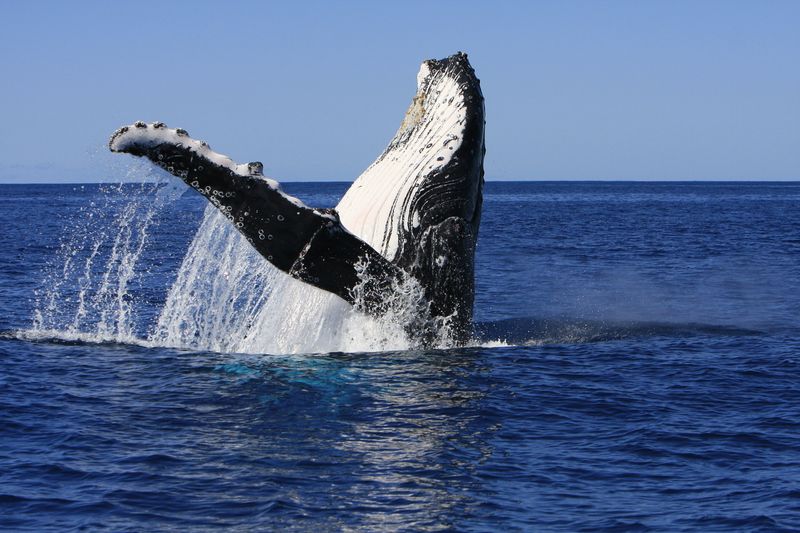
Humpback whales are famed for their haunting songs. These melodies travel vast ocean distances, serving communication and mating purposes.
Each song can last hours, changing yearly, reflecting the whale’s adaptability and intelligence.
The humpback’s song is a profound example of sound’s role in marine ecosystems, illustrating an underwater language of astonishing complexity.

